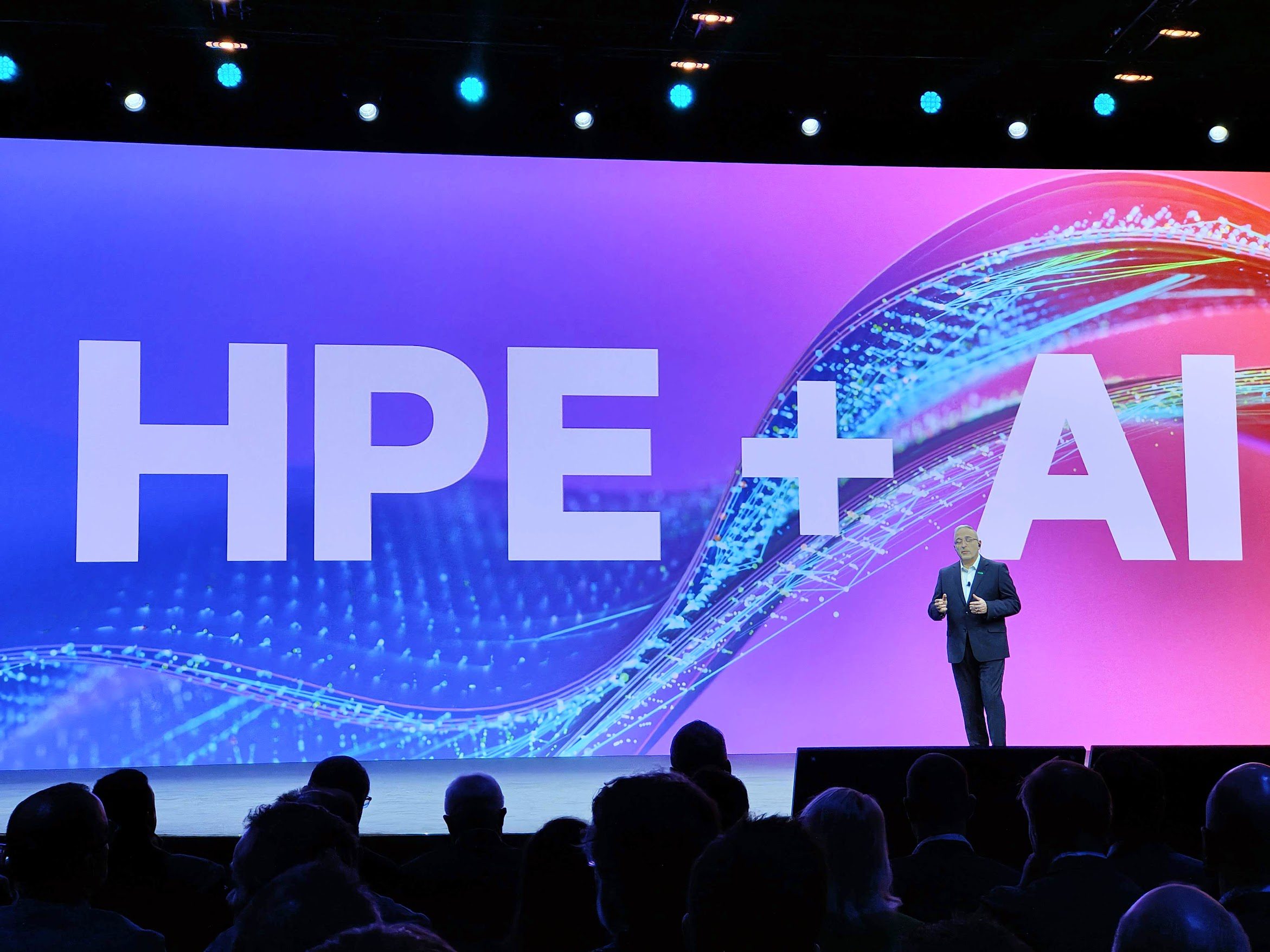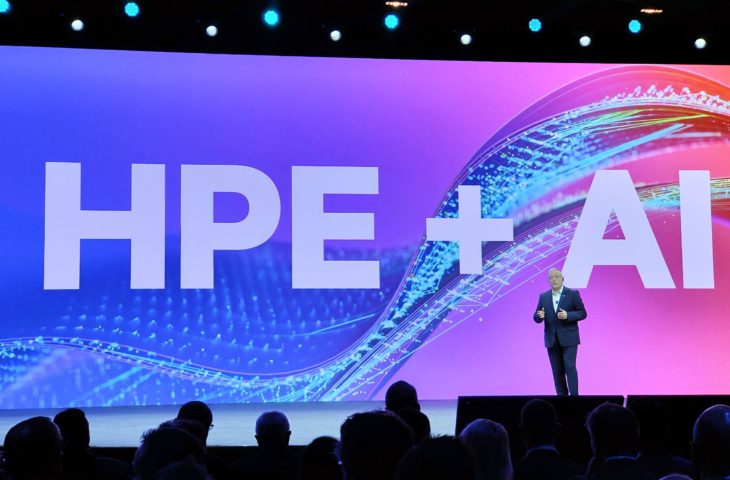HPE wants to differentiate itself from the competition with an AI-focused offering that focuses on a complete, AI-native architecture. Of course, Nvidia plays an important role in this new story.
“What will the future bring?” HPE CEO Antoni Neri asks the question rhetorically. “The answer is clearly AI. AI will be more disruptive than mobile phones and the cloud. It is the most important technology of our time,” he predicts.
This presents an important challenge for HPE during Discover Barcelona. The company has to play to its own strengths, but at the same time it cannot and does not want to escape the AI hype. Like almost every technology player that has emerged since ChatGPT launched exactly a year ago, the company has been forced to take on a major guest role for Nvidia. Although HPE has evolved into a service specialist, hardware boxes are still in the company’s DNA, and if you want to fit AI workloads into these boxes, you can’t ignore Nvidia components.
AI architecture
This creates a perception problem: If the big news for everyone and their cat is a successful AI-focused collaboration with Nvidia, what added value do individual players have? HPE has an answer that makes sense, but sometimes sounds a little less conclusive than we might like.
The core is the so-called AI-native architecture, which is tailored to generative AI. HPE recognizes that fundamentally different workloads require fundamentally different hardware. This AI-native architecture takes the form of a full-stack solution where HPE, together with Nvidia, offers a hardware-to-software solution for training, optimizing and running AI models in a hybrid context.
storage
On the hardware side, we see two important announcements at HPE Discover Barcelona. On the one hand, we hear that AI starts with data and data requires fast storage. The HPE GreenLake Flash platform for file storage is therefore receiving some upgrades. HPE offers support for 30TB drives, increasing capacity density by a factor of 1.8. Total usable capacity scales up to 250PB.
A data box alone can’t do much, so the solution will also get a boost on the connectivity side. HPE GreenLake for file storage now supports Nvidia Quantum-2 InfiniBand and Nvidia GPUDirect for GPU-centric computing for big data. “GPUs are expensive,” says Patrick Osborne, SVP and GM HPE Storage. “They need to be fed as efficiently as possible.”
Inference
What will we feed then? How about a rack filled with HPE ProLiant DL380a Gen 11 servers? The hardware was – how could it be otherwise – developed with Nvidia and is based on Nvidia L40S GPUs. These are relatively common GPUs that can support AI workloads and are ideal for inference, but come off the line faster than the very powerful (and expensive) Hopper chips.
The server will also feature Nvidia BlueField 3 DPUs and Nvidia Spectrum-X networking. The latter addition makes it clear that HPE is thinking big, as Spectrum-X allows nodes and racks to be chained together in a cluster.
“The solution is purpose-built for common AI workloads,” said Neil MacDonald, EVP and GM of Compute. “The hardware is optimized for models like Llama-2-70B.” The server allows you to refine and use models. These can be pre-trained models, such as those announced by HPE a few months ago.
The rack that HPE is painting today is a little more entry-level friendly than the announcement a few weeks earlier, in which HPE teamed up with Nvidia to launch powerful hardware to train models on their own. This solution was based on the HPE Cray EX2500 supercomputer and new (de facto almost unavailable) Nvidia GH200 Grace Hopper superchips. The HPE ProLiant DL380a Gen 11 is not intended for training models, but rather for inference and tuning.
Software stack
A whole stack is more than the hardware. The HPE Machine Learning Development Environment and the HPE Ezemeral data platform therefore run smoothly on the HPE ProLiant DL380a servers. At the top of the list we once again find Nvidia with its AI Enterprise ecosystem and NeMo frameworks.
HPE cannot differentiate itself with the Nvidia suite, so the focus is on the HPE Machine Learning Development Environment. This is not only available on our own servers, but also as a managed service from cloud providers AWS and Google. HPE means it when it says it believes in hybrid: you can train AI and ML models in the environment and that is now possible in a hybrid context. “We are hybrid by design,” says Neri.
AI-native hybrid architecture
In summary, HPE is presenting hardware improvements at Discover based on close collaboration with Nvidia. This hardware does not exist in a vacuum, but is part of a platform approach in which HPE holds edge, data center and cloud together and brings data together through software. Models are trained and tuned using the HPE ML development environment, now available in the cloud. Improvements in HPE Ezmeral help transfer the data to the algorithms. Ezmeral also now works better with GPUs.
If you contact HPE you can get the entire stack. A concrete example of this is the rack solution with ProLiant servers. This solution combines hardware with the necessary software from HPE and Nvidia. HPE believes that this stack approach with an AI-based architecture will be enough to differentiate its offering, which like all of its competitors is based on Nvidia.
That sounds plausible, even if we still miss a bit of steamlining. For example, the connection between storage and computing power remains unclear, as does the actual integration of all software components. Finally, these are presented here as part of an overall package, but other than that story they are also fairly independent. HPE partially combines what it already has, which in turn makes us wonder whether the AI-native architecture is really that fundamentally different from what we hear on stage.














